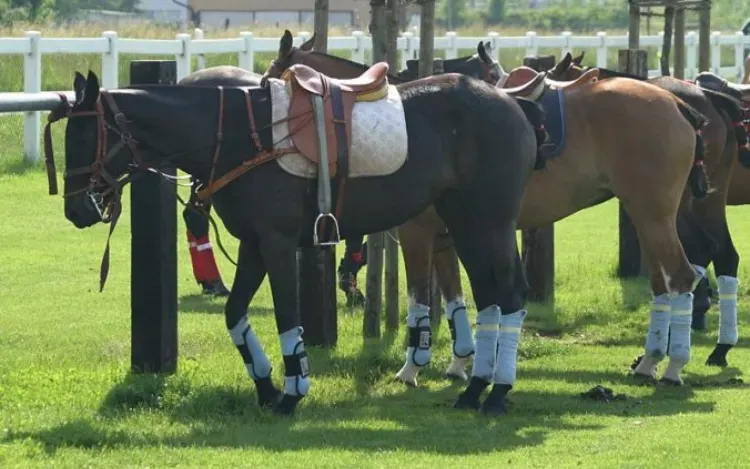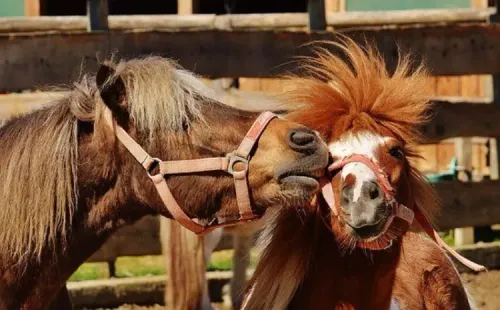
RER is also called Azoturia, Monday Morning Legs, and Tying Up. In the past, some draft horses had symptoms of this condition on Monday morning after their day of rest. Hence the name Monday Morning Legs.
Today, the extreme version of RER is mainly associated with athletic ridden horses, and it must be taken seriously. So what exactly is RER?
Identifying RER
RER is a muscle cramp in the horse’s back and quarters. It can be very severe or mild and is associated with the build-up of lactic acid. The affected muscles are in spasm and very painful.
In mild cases, the horse will walk stiffly. In bad cases, the horse is reluctant to move and may lay down and will be very anxious and in extreme pain, with sweating and increased respiration.
What to do if your Horse has a bad Episode of RER
This is a serious condition and the horse will have muscle damage. Affected muscle cells release myoglobin which discolours the urine and causes kidney damage.
Follow this advice:
- Stop riding and do not attempt to move the horse
- Phone for help and wait to be picked up with a trailer/lorry
- Get the horse in his stable and keep his muscles warm
- Offer the horse water
- Seek prompt veterinary assistance.
As a matter of course, the vet will administer pain relief and anti-inflammatories. If the horse is highly agitated it will be given a calmer. This is usually acepromazine which will also dilate the blood vessels and get more blood to the affected muscles.
Dehydration is a clear danger and if present will lead to kidney damage. This means the horse may need to be rehydrated orally or intravenously.
What to do if your Horse has a mild Episode of RER
Follow the procedure for a bad episode and do not ride through the horse’s muscle cramp problem as this will make for greater muscle damage.
What causes RER
Susceptible fit horses will have muscle glycogen accumulation during their days of rest. When returning to exercise this causes their muscles to produce excessive lactic acid and this causes muscle damage and restricted blood flow to the affected muscles.
Unfit horses undertaking prolonged exercise are vulnerable. So the horse at grass who takes part in a 20-mile pleasure ride is susceptible to “tying up”.
Are any Horse Types more likely to be Affected?
This list identifies horses most at risk of “tying up”:
- Young horses
- Mares
- Stressed horses
- Some horses have a genetic tendency to “tie up”.
Two Triggers for Developing RER
- Electrolyte imbalances will predispose a horse to “tying up”. For susceptible horses, cereals are a trigger as they contain high levels of potassium which then affects the intake of sodium
- Stress and associated sweating are major factors, and this is particularly so if the horse does not drink before and after work.
Prevention is better than Cure
- Feed a low carbohydrate and a high-fat diet to susceptible horses and this means replacing high grain diets with vegetable oil and linseed mixed in a low carbohydrate alternative, like bran
- Warm these horse up before vigorous exercise and cool them down afterward
- Where possible exercise susceptible horses daily as even one day of inactivity can result in an ERE episode
- If you can not exercise a susceptible horse turn him out for the day
- Daily add 6 grams of magnesium oxide and salt to the horse’s feed.

Article Suggestion
A Snapshot – The Low Down on Pre-Laminitic Metabolic Syndrome
